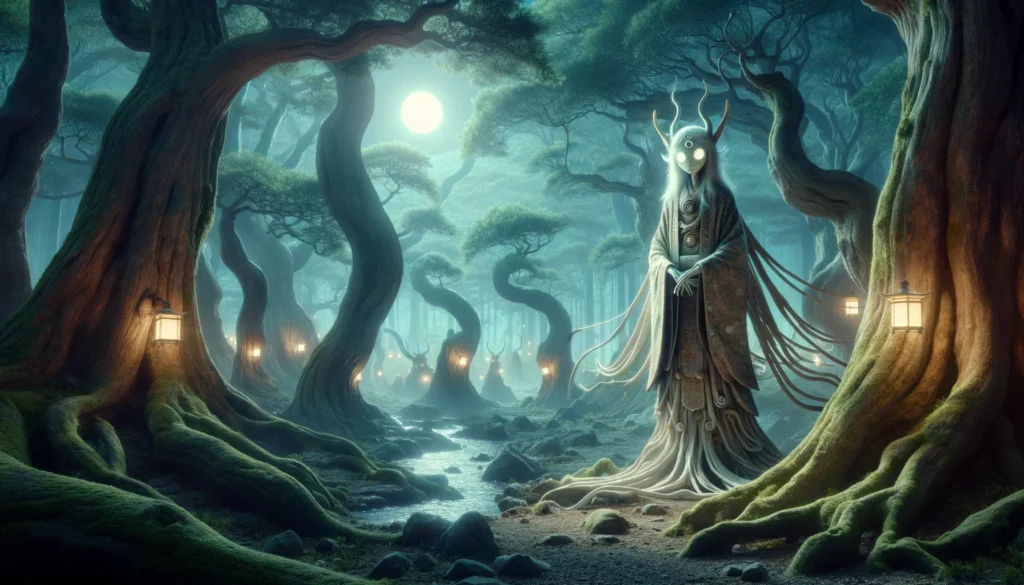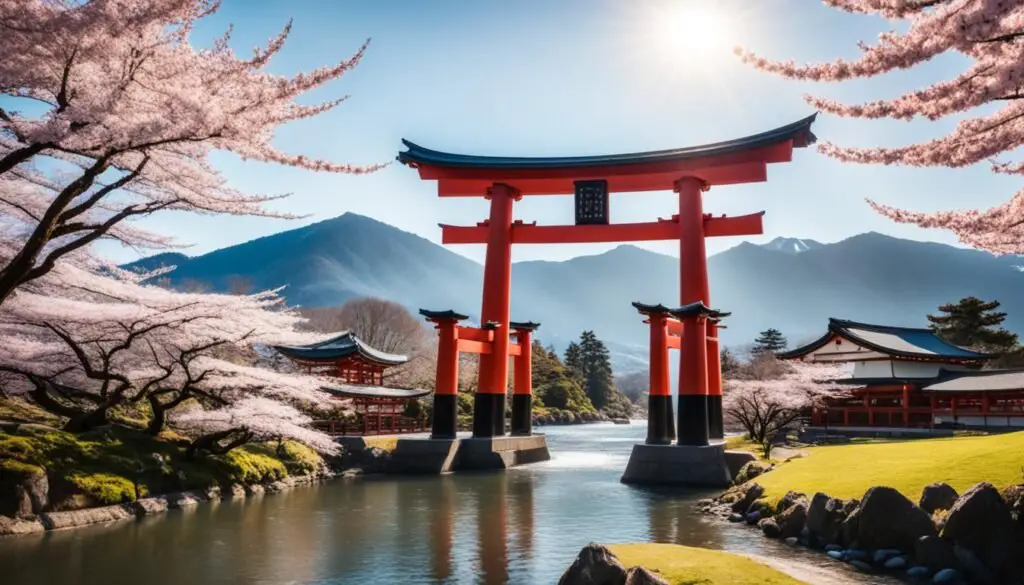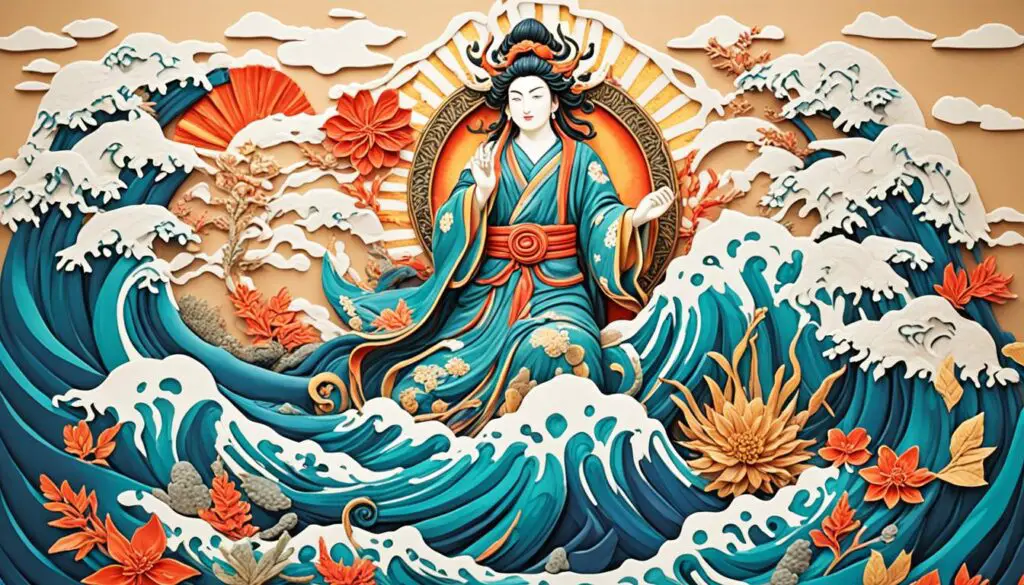Have you ever been captivated by tales of supernatural beings and monsters? The kind that send chills down your spine while simultaneously sparking a sense of wonder and curiosity?
If so, then you’re in for a treat as we embark on a journey into the fascinating world of yokai in Japanese mythology.
As enthusiasts of Japanese culture and folklore, we have always been drawn to the captivating stories and rich traditions surrounding these supernatural creatures.
In Japanese mythology, the exact number of yokai (supernatural monsters, spirits, and demons) is not definitively known, as these creatures stem from a rich folklore tradition that has evolved over centuries. Estimates vary widely, with hundreds of different yokai being documented, and new ones are continually created in popular culture, reflecting the fluid and expansive nature of this aspect of Japanese mythology.
Join us as we dive deep into the enchanting world of yokai, exploring their influence in modern culture, the challenge of counting these elusive entities, their categorization and recording, and their integral presence in regional folklore.
Through this exploration, we hope to unravel the mystique surrounding yokai and uncover the significance they hold in Japanese society.
Key Takeaways:
- ✅ Yokai are supernatural beings or monsters deeply entrenched in Japanese mythology.
- ✅ Counting yokai presents a challenge due to their elusive nature and vast presence in folklore.
- ✅ Yokai have permeated modern culture, shaping literature, media, and contemporary society.
- ✅ They are classified and recorded through both traditional and modern research approaches.
- ✅ Exploring regional folklore uncovers unique variations and lesser-known yokai.
Understanding Yokai
Yokai, supernatural creatures deeply woven into Japanese mythology, captivate the imagination with their diverse forms and distinct characteristics.
These elusive entities defy a simple definition, as they encompass a wide range of creatures falling under the yokai category.
Exploring the history and evolution of yokai reveals the influences of various cultural, historical, and religious beliefs in Japan.
Defining Yokai
Defining yokai is a complex task due to their multifaceted nature and the diversity of creatures that fall under this category.
Yokai can manifest as spirits, monsters, ghosts, or even ordinary objects endowed with supernatural abilities.
They can be mischievous, malevolent, or benevolent, playing different roles in Japanese folklore and mythology.
This complex nature makes it challenging to establish a definitive and all-encompassing definition of yokai.
The Historical Evolution of Yokai
The concept of yokai has evolved over time, shaped by cultural, historical, and religious influences in Japan.
The roots of yokai can be traced back to ancient legends and mythologies, including influences from Shintoism, Buddhism, and regional folklore.
As time passed, yokai became ingrained in Japanese culture, appearing in literature, artwork, and theater.
Additionally, yokai have adapted to modern times, appearing in various forms of media, such as manga, anime, and video games, while still remaining rooted in their historical origins.
The Diversity of Yokai
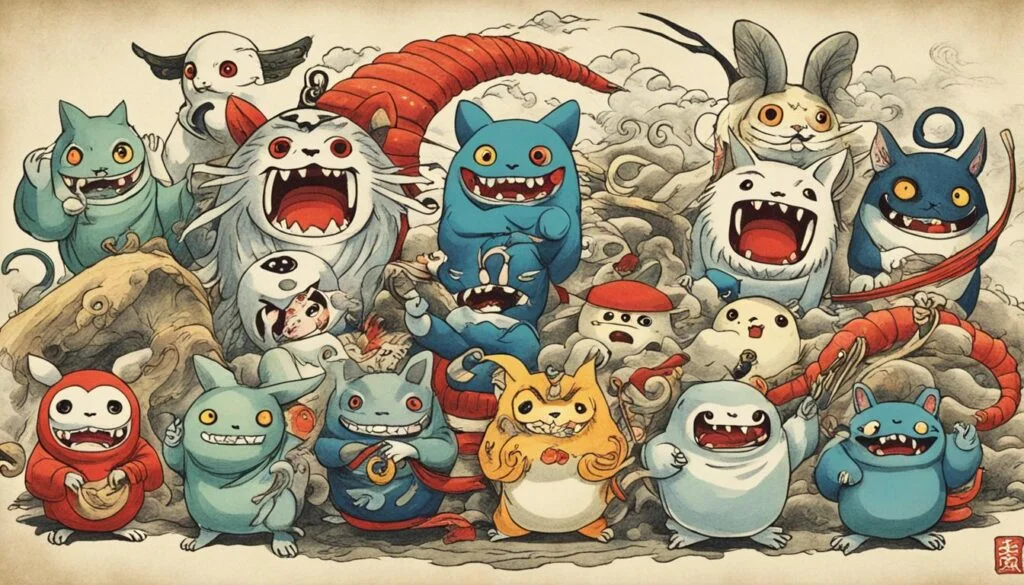
Yokai, the supernatural beings of Japanese mythology, exhibit a remarkable diversity in their forms, characteristics, and folklore.
From mischievous tricksters to vengeful spirits, each type of yokai has its own unique traits and captivating stories to tell.
Types of Yokai
The world of yokai encompasses numerous types, each with its own distinct nature and abilities. Here are some popular types of yokai:
- Kappa: These water-dwelling creatures possess a shell on their backs and a bowl-like depression on their heads that holds water, giving them their amphibious nature.
. - Kitsune: Known as the magical foxes, kitsune are shapeshifters with the ability to take on human form. They are often depicted as intelligent and mischievous tricksters.
. - Tanuki: Tanuki are commonly associated with shape-shifting and exaggeration. They are often depicted as playful, mischievous creatures with a love for sake and large bellies.
. - Yuki-onna: Yuki-onna, meaning “snow woman,” is a ghostly yokai associated with winter. She appears as a beautiful woman with pale skin and icy breath.
. - Tengu: Tengu are bird-like yokai with long noses or beaks. They are known for their martial arts skills and association with forests and mountains.
These are just a few examples of the diverse range of yokai in Japanese folklore.
Each type contributes to the rich tapestry of legends and traditions that surround these supernatural beings.
Famous Yokai in Japanese Folklore
Japanese folklore is replete with famous yokai that have become iconic symbols of the country’s supernatural heritage.
Two prominent examples are:
- The Nine-Tailed Fox: Known as “kitsune” in Japanese, the nine-tailed fox is a revered yokai believed to possess immense magical powers. It is often depicted as a beautiful woman with fox ears and multiple tails.
. - The Mischievous Kappa: The kappa is a water-dwelling yokai that inhabits rivers and lakes. Often portrayed as a mischievous creature, the kappa is known for its trickery, water-related abilities, and its love for cucumbers.
These famous yokai have captured the imagination of people throughout history, inspiring countless tales and artistic interpretations.
The Challenge of Counting Yokai
Why Quantifying Yokai Is Difficult
Counting yokai, the supernatural beings of Japanese mythology, poses a significant challenge.
Their elusive nature, coupled with the vastness of Japanese folklore, makes it challenging to establish an exact number.
Yokai encompass a wide range of descriptions, characteristics, and regional variations, adding to the difficulty of categorizing and quantifying them accurately.
Yokai are not confined to a singular form or set attributes. They can manifest in various shapes, sizes, and behaviors, often influenced by regional folklore.
This diversity further complicates the task of counting yokai, as each creature presents unique challenges in classification and documentation.
Moreover, yokai have evolved over centuries, adapting to different cultural, historical, and religious influences.
As a result, their traits and appearances have transformed as stories were passed down through generations.
These variations, combined with the sheer number of yokai, make it nearly impossible to determine a definitive count.
Estimates and Scholarly Attempts
Scholars and researchers have made valiant efforts to estimate the number of yokai, but their endeavors have not yielded definitive results.
Due to the subjective nature of yokai descriptions and the diversity of regional folklore, precise numbers remain elusive.
However, there have been scholarly attempts to provide some understanding of the yokai count.
Some researchers have focused on specific yokai categories or compiled extensive databases to document known instances.
These efforts have shed light on the vastness and complexity of yokai mythology, while acknowledging the limitations of definitive quantification.
Despite the challenges and uncertainties surrounding yokai counting, the allure of these supernatural creatures continues to captivate our imagination.
Their enigmatic nature and abundance convey the rich tapestry of Japanese mythology, ensuring that the exploration of yokai remains an intriguing pursuit.
Yokai in Modern Culture
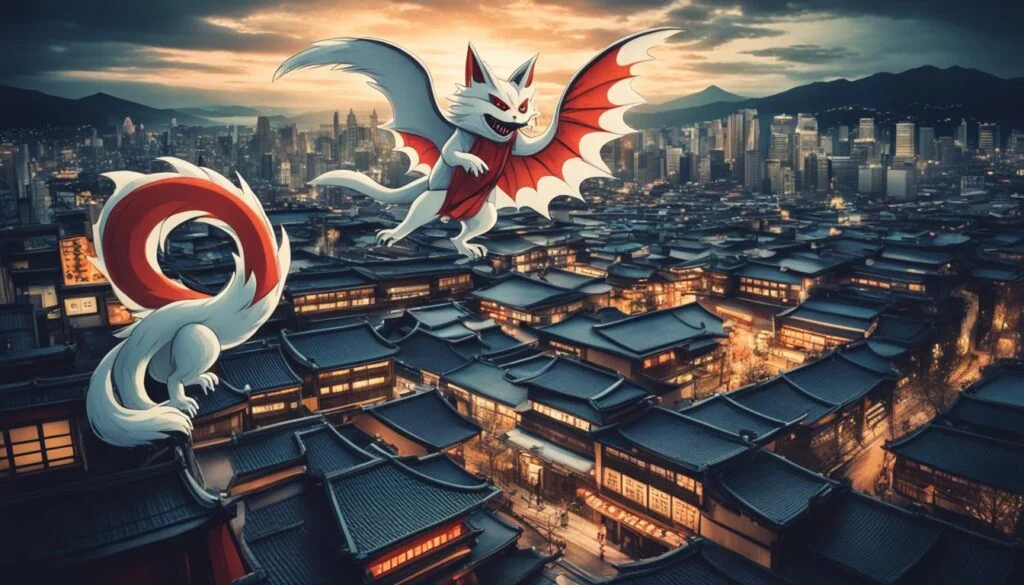
Yokai, with their mesmerizing presence and captivating stories, have seamlessly integrated themselves into modern culture.
From literature to media, these supernatural beings have left an indelible mark in various art forms, captivating audiences both in Japan and around the world.
Yokai in Literature and Media
Literature, manga, anime, and video games have become fertile grounds for yokai’s vivid portrayal.
Many well-known works feature yokai characters, bringing their rich mythology to life and captivating readers and viewers alike.
Through these mediums, yokai have become compelling protagonists and antagonists, adding depth and intrigue to narratives.
The popularity of yokai-centric stories goes beyond their home country. Fans around the world eagerly consume Japanese literature and media that revolve around these supernatural beings, creating a global fascination with yokai and their unique traits.
The Influence of Yokai on Contemporary Japanese Society
The influence of yokai extends beyond artistic expressions. These supernatural beings have subtly shaped contemporary Japanese society, infiltrating popular culture, art, fashion, and even tourism.
Yokai-themed events, exhibitions, and festivals have gained traction, attracting tourists from far and wide.
The allure of encountering these mythical creatures in various forms has become a unique selling point for Japan’s vibrant tourism industry.
Moreover, the aesthetics and symbolism of yokai have inspired artists, fashion designers, and creators in Japan.
Their distinctive appearances, traits, and stories have been reimagined and incorporated into contemporary art and fashion, allowing yokai to transcend mythology and become a cultural icon.
The impact of yokai on Japanese society reflects the enduring intrigue and love for these supernatural beings.
They continue to captivate imaginations, connecting the past with the present and ensuring that the legacy of yokai lives on.
How Yokai Are Categorized and Recorded
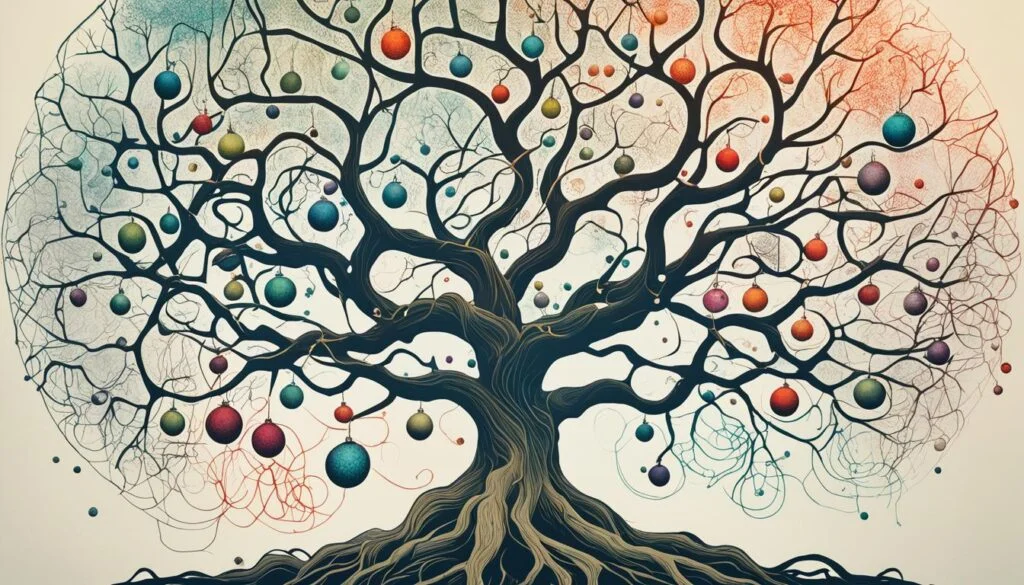
Yokai, as diverse and fascinating as they are, have been categorized and recorded in various ways throughout history.
These supernatural beings have captured the imagination of people for centuries, leading to the development of different systems to classify and understand them.
Traditional Classifications of Yokai
In traditional Japanese folklore, yokai were often classified based on their physical characteristics, abilities, or regional associations.
This allowed people to categorize and identify different types of yokai based on common attributes.
For example, some traditional classifications of yokai include:
- Kijo: Female demons or spirits known for their seductive and vengeful nature.
- Tsuchigumo: Yokai that takes the form of giant spiders and inhabits mountains and forests.
- Yamabiko: Echo spirits that mimic human voices in the mountains.
These traditional classifications provided a framework for understanding yokai and their unique characteristics within Japanese folklore.
Modern Efforts in Yokai Research
In modern times, there have been concerted efforts to study and research yokai in a more systematic and comprehensive manner.
Scholars and researchers have adopted interdisciplinary approaches, combining folklore studies, cultural analysis, and historical research to gain a deeper understanding of these supernatural creatures.
By engaging with various fields of study, researchers have been able to trace the historical origins of yokai, analyze their cultural significance, and explore the ways in which they have influenced contemporary society.
This multidisciplinary approach has shed light on the rich tapestry of yokai folklore and provided valuable insights into their role in Japanese mythology and popular culture.
As modern research on yokai continues to evolve, scholars strive to create a comprehensive database of yokai, cataloging their individual characteristics, legends, and regional variations.
This ongoing research ensures that yokai remain an intriguing and vibrant aspect of Japanese mythology for generations to come.
Exploring Yokai Through Regional Folklore
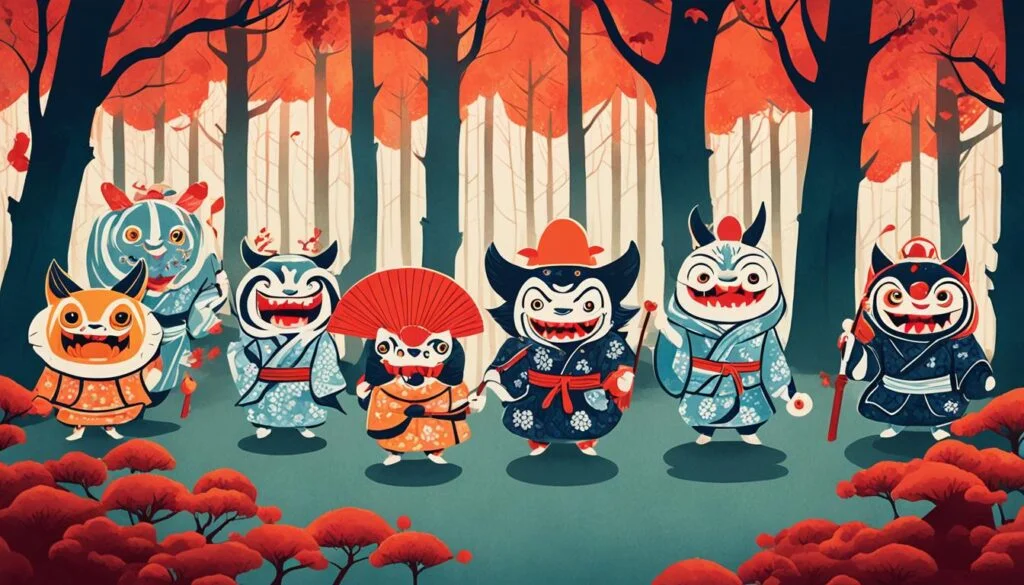
Yokai, the supernatural beings of Japanese mythology, have a diverse presence across different regions of Japan.
Each region has its own unique yokai folklore, featuring distinct variations in appearance, characteristics, and stories.
Exploring yokai through regional folklore allows us to gain a deeper understanding of these fascinating creatures and their significance in different parts of Japan.
Regional Variations of Yokai
In Japan, yokai take on various forms and have distinct regional variations. For example, in the northern region of Tohoku, the Namahage yokai is prominent during the New Year season.
These scary creatures, depicted with demonic masks and straw attire, visit homes to scare away laziness and misfortune.
In the Kansai region, the Nekomata yokai is believed to be a two-tailed cat with supernatural powers, capable of bringing good luck or causing mischief.
From the mountainous regions of Gifu to the coastal areas of Kyushu, each region has its own unique interpretation and portrayal of yokai.
These regional variations provide a rich tapestry of folklore that reflects the cultural diversity and local beliefs across Japan.
Discovering Lesser-Known Yokai
While some yokai have gained widespread fame and recognition, there are many lesser-known yokai that have fascinating tales but remain relatively unknown outside of their local communities.
These lesser-known yokai often have intriguing stories associated with specific regions, highlighting the deep connection between folklore and local culture.
One such example is the Sankai yokai from Nagano Prefecture. In the form of a three-legged mountain dog, the Sankai is believed to protect travelers from danger and guide them along treacherous mountain paths.
The legend of the Sankai has been passed down through generations, telling a tale of loyalty, bravery, and the mystical connection between humans and yokai.
Uncovering these lesser-known yokai not only expands our knowledge of Japanese mythology but also exposes us to the rich tapestry of stories and beliefs that make up the cultural heritage of different regions in Japan.
Exploring Yokai Through Regional Folklore provides us with a fascinating glimpse into the unique variations of yokai throughout Japan, allowing us to appreciate the diversity of these supernatural creatures and their cultural significance.
By diving into the lesser-known yokai and their regional tales, we gain a deeper understanding of the intricate web of folklore that has shaped Japanese mythology for centuries.
Conclusion
Yokai are an integral part of Japanese mythology and folklore, captivating the imaginations of people for centuries.
The diverse range of yokai, from mischievous kappa to mystical tanuki, showcases the rich and complex nature of these supernatural beings.
While it is challenging to determine the exact number of yokai, their elusive and ever-evolving presence makes quantifying them a daunting task.
Exploring the world of yokai provides us with a deeper understanding of Japanese culture and traditions.
The stories and legends surrounding yokai not only entertain but also offer insights into the human fascination with the supernatural.
From ancient times to the present day, yokai have thrived in various forms of media, influencing literature, manga, anime, and even contemporary Japanese society.
As we delve into yokai folklore, we discover regional variations that add to the enchantment and mystery.
Lesser-known yokai from specific regions offer unique tales, often overlooked outside of their local communities.
By immersing ourselves in these regional narratives, we unlock a treasure trove of yokai lore that further enriches our understanding of these captivating creatures.
In conclusion, while the exact count of yokai remains elusive, the exploration of these supernatural beings is a journey that unveils the wonders of Japanese mythology.
Their diverse nature, rich history, and enduring presence continue to fascinate and intrigue us.
As we delve into the world of yokai, we gain not only knowledge but also a greater appreciation for the cultural significance and human fascination with the supernatural.
Frequently Asked Questions
Q: How many Japanese yōkai are there?
A: The exact number of Japanese yōkai is not known, as these mythical creatures are part of a rich folklore that has evolved over centuries, but there are hundreds of different types documented.
Q: Who are the 3 great yōkai?
A: The three great yōkai typically refer to Nurarihyon, Shuten-dōji, and Tamamo-no-Mae, known for their powerful abilities and significant roles in Japanese folklore.
Q: What is the yōkai in Japanese mythology?
A: In Japanese mythology, yōkai are supernatural monsters, spirits, or demons that appear in folklore. They have diverse forms and attributes, with some being malevolent and others benevolent or mischievous.
Q: Is oni a yōkai?
A: Yes, oni are considered a type of yōkai in Japanese folklore. They are typically portrayed as ogre-like creatures with fierce appearances and are often associated with acts of evil or mischief.
Q: Who is the king of all yōkai?
A: The king of all yōkai is often considered to be Nurarihyon, especially in modern pop culture and certain folklore interpretations. He is depicted as a supreme commander of the yōkai, able to command respect and obedience from them.
Q: What is the most terrifying yōkai?
A: Opinions on the most terrifying yōkai vary, but one frequently mentioned is the Gashadokuro, a giant skeleton that roams the countryside at night, capturing and eating humans.
Q: Is kitsune a yōkai?
A: Yes, kitsune, or fox spirits, are considered yōkai in Japanese folklore. They are known for their intelligence, magical abilities, and the power to shape-shift, often taking on the form of a human.
Q: Is Kappa a yōkai?
A: Yes, Kappa are aquatic yōkai known for their mischievous behavior and are said to inhabit rivers and ponds in Japan. They are depicted as humanoid creatures with a water-filled dish on their heads.
Q: What is the friendliest yōkai?
A: The friendliest yōkai is often considered to be the Zashiki-warashi, known for bringing good fortune to homes it inhabits. These childlike spirits prefer to live in well-maintained households and play harmless pranks.
Q: Is Godzilla a yōkai?
A: Godzilla is not traditionally considered a yōkai. It is a kaiju, a genre of monsters distinct from yōkai, originating from Japanese science fiction films rather than folklore.
Q: Who is the most powerful yōkai?
A: Determining the most powerful yōkai is subjective and varies by source, but figures like Nurarihyon, due to his leadership over yōkai, and Tamamo-no-Mae, for her magical prowess, are often cited as among the most powerful.


